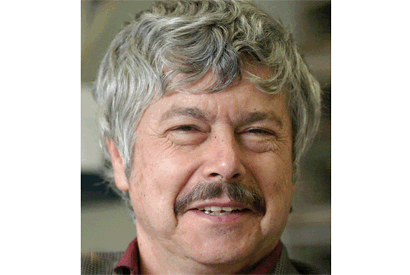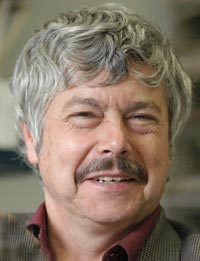Radiation fears unfounded, campus expert says
Epidemiologist Kirk Smith discusses the danger to the U.S. from radiation released by Japan's troubled nuclear reactors.

March 17, 2011

Kirk Smith, professor of global environmental health (Peg Skorpinski photo)
Epidemiologist Kirk Smith, a professor of global environmental health in UC Berkeley’s School of Public Health, is an expert on the health effects of radiation exposure, such as that from nuclear waste, nuclear power plant accidents and radon in households. He has been on a number of national committees to establish risk standards for nuclear power plants and to find a safe site for high-level nuclear waste disposal. In a recent interview with UC Berkeley Media Relations, Smith discussed the danger to the U.S. from radiation released by the four damaged nuclear reactors at the Fukushima Daiichi nuclear plant in Japan.
Q: There are reports of a plume of radiation headed for the United States that is expected to hit California on Friday. What is the danger to people on the West Coast?
The short answer is, essentially none. There is no such thing as zero risk, but the risk from the radiation from Japan is orders of magnitude from being dangerous, by any definition.
To put it into perspective, I live in the hills above the stadium, which is at a higher elevation than the campus and gets more radiation from cosmic rays. The difference between the radiation I receive in my office down on campus and what I receive at my house is many times more than you’d get from this plume.
Most of the human-caused radiation we receive these days actually comes from medical procedures, but there are also radiation risks from living at higher elevations, or taking a plane flight.
We will be able measure whatever radiation gets here, no question. The nuclear engineering department has monitors on its roof to measure the radiation. But just because you can measure it doesn’t mean it’s dangerous.
Even after the Chernobyl accident, which released a million times more radiation than has been released in Japan and produced a plume that went all over the planet, there was absolutely no risk to people in the United States.
The pictures on the Web showing a very dangerous-looking plume coming across the Pacific Ocean is a wonderful testament to our ability to measure things, but the radiation we measure is not a risk of any consequence.
Q: Some people have been buying potassium iodide tablets as protection against possible radioactive iodine in the plume. Is that advisable?
A: That is a really bad idea. Like any medication, potassium iodide has side effects. They can be as mild but unpleasant as nausea, but you also can die from potassium iodide side effects, though it is rare. If you live near a nuclear reactor and something happens, yes, take potassium iodide to protect yourself from radioactive iodine. But we are 8,000 kilometers away from the Japanese reactors, and by the time any radiation gets to us, there will be no radioactive iodine. It will have decayed – its half life is only eight days – or dissolved in water and fallen into the ocean.
Q: What about other precautions?
People in California do not need to take any precautions because the risk is insignificant. And when we say that, we can actually be pretty certain, because we know more about the health effects of radiation than about any other pollutant, by far. Ironically, that is because of long-term studies of the survivors of the Japanese atomic bombings in Hiroshima and Nagasaki.
After Chernobyl, the Soviets were afraid to admit to the accident, and at first they didn’t evacuate people from the surrounding area. A large proportion of the radioactive material in the plant went into the sky due to the explosion and fire. Neither of these is true in Japan. But even at Chernobyl, almost all the impact was on the workers in the nuclear plant. Although the local population experienced some small, long-term cancer risk, most of the health impact was from stress, anxiety and fear. That is not to be sneezed at, but that, not radiation, was the major disruption in life, even to this day, and will probably be so in Japan as well.
Q: In terms of radiation release, how does Chernobyl compare to what has happened in Japan?
Like the forest fire compared to the camp fire. It is the same kind of problem, but Chernobyl created a hazard many, many times bigger.
For more information:
- FAQ about Radiation by California Department of Public Health
- Radiation Basics by the Health Physics Society